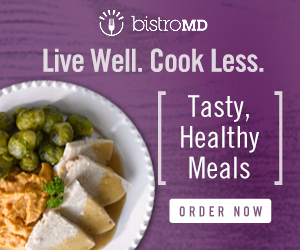In a first, the U.S. Food and Drug Administration has authorized a COVID-19 vaccine for use in kids ages 12 to 15 — terrific news for adolescents (and their parents) who have been waiting anxiously for this cohort to be eligible for the shot.
In some cases, Monday’s FDA action on the Pfizer-BioNTech vaccine will allow entire families — not just mom and dad — to safely eat indoors at a restaurant, watch a movie in a theater, attend a baseball game or even hang out at a friend’s house with minimal risk of becoming ill.
That could be life-changing for some families. But beyond that, will the availability of a vaccine for younger teens make much of a dent in our collective fight against the coronavirus?
After all, kids in this age group make up just over 5% of the U.S. population, according to the Kids Count Data Center, and there’s no reason to assume that every one of these kids will get the vaccine as soon as it’s available.
Newsletter
Get our free Coronavirus Today newsletter
Sign up for the latest news, best stories and what they mean for you, plus answers to your questions.
You may occasionally receive promotional content from the Los Angeles Times.
In addition, this group does not face a particularly high risk of becoming very sick with COVID-19 and taking up hospital beds. Indeed, data from the Centers for Disease Control and Prevention show that while kids between the ages of 5 and 17 account for 16.3% of the U.S. population, they represent 10.1% of COVID-19 cases and 0.1% of deaths (a total of 350 as of May 10).
Still, experts say the authorization is worth celebrating.
“Immunizing this group won’t bring us to the herd immunity we are longing for, but it is going to help big time,” said Dr. Miguela Caniza, a pediatrician and director of the infectious disease program for St. Jude Global in Memphis.
Dr. David Dowdy, an infectious disease epidemiologist at Johns Hopkins University in Maryland, put it this way: “It’s not revolutionary or game changing, but to my mind it’s significant. The path to beating this virus is taking lots of small steps. This is one of those small steps.”
Here’s more about why this matters.
Every vaccination helps
Most experts agree that total herd immunity to the coronavirus is not likely in the United States. But chasing that elusive goal isn’t the only reason to get the shot.
As more people are vaccinated, the risk that our healthcare system will be overwhelmed by future outbreaks drops precipitously. So does the chance that a new variant will develop that is immune to our current vaccines or treatments.
According to U.S. Census data, there are about 18 million kids between the ages of 12 and 15 in the United States — that’s more then the entire population of two-thirds of countries around the world. If even half of these kids ultimately get vaccinated, that’s about 2.5% more Americans who will be much less likely to contract and transmit the virus if they encounter it.
“Every little percentage point counts in this game,” Dowdy said. “We win if we build up that immunity 1% at a time. We fail if there are gaps we’re not able to fill.”
12- to 15-year-olds can secretly carry the virus
Over the course of the pandemic, many parents found comfort in data that showed children infected with the virus generally did not get nearly as sick as infected adults.
But that blessing can also be a curse because kids who exhibit no symptoms of an infection can still pass the virus along.
“In this age group, the disease is often asymptomatic or it can present as just a little runny nose, or the kid doesn’t smell that well,” Caniza said.
And since adolescents don’t always communicate well, they may not tell family members that they are feeling under the weather — especially if their confession might interfere with being able to hang out with friends.
“They might not tell you they are sick, and they might continue mingling,” Caniza said.
We love them, but can we trust them?
Sometime over the past year you’ve probably seen a pack of teens or tweens roaming the streets — some wearing masks, some not, and some with a mask pulled uselessly beneath the chin.
“Just knowing how teenagers are, they may not be as careful as other people about washing their hands, or keeping their distance or wearing masks,” Caniza said.
And if they are infectious, that could be a real problem.
“Youths can have a role in transmission of the virus in the community,” said Julie Swann, an expert in healthcare systems at North Carolina State University. “It’s thought that in Michigan, schools and sports were associated with the big surge in the state along with a mutation.”
Swann added that managing the behavior of early adolescents can be harder than the behavior of younger children.
“They tend to go out with their friends, away from the house, and parents have less control,” she said.
That might help explain data that shows teens were more likely to get COVID-19 than younger children. According to the CDC, adolescents ages 12 to 17 were twice as likely as children aged 5 to 11 to test positive for the virus.
They like to mix it up
Being with friends is important for teens, and their normal daily lives are rife with opportunities to transmit the virus — while playing sports, having sleepovers, gathering at parks or huddling over each other’s phones.
Swann said she is particularly worried about summer camp.
“Moving into summer, some kids will go to camp where they are with different groups of kids every week,” she said.
She also worries about overnight settings, where kids are not likely to wear masks.
“I’m anticipating that we could see a surge of cases in the summer associated with children and youth in summer camp settings,” she said.
Middle and high schools could reopen more fully
While many elementary schools across the nation are offering in-person education that looks pretty similar to what kids got before the pandemic, the same cannot be said for many middle and high schools, which generally serve a larger number of students who typically mix more throughout the day.
Dowdy said making COVID-19 vaccines available to 12- to 15-year-olds could dramatically improve the safety of these schools, allowing them to open more fully.
“Now you are getting to a point where you can say all high schoolers are eligible for the vaccine,” he said. “Even if a few don’t get it, you can feel much more comfortable that opening up schools is not creating outbreaks in the making.”


